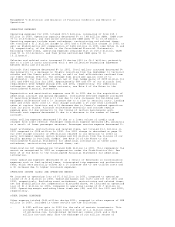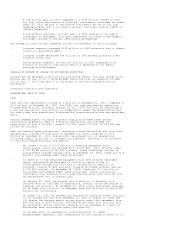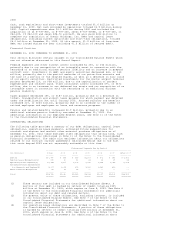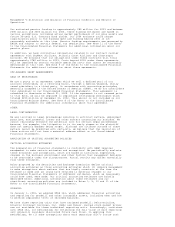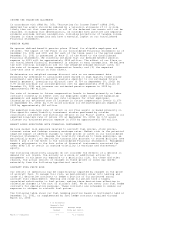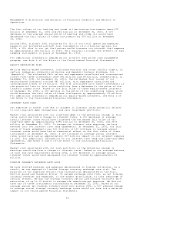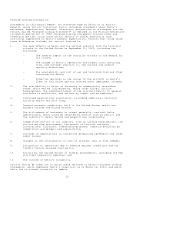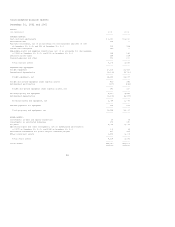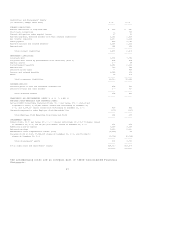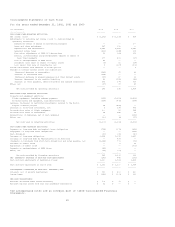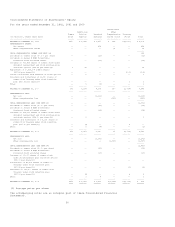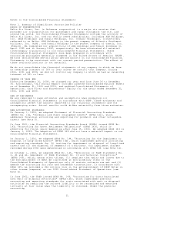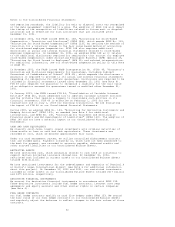Delta Airlines 2002 Annual Report Download - page 127
Download and view the complete annual report
Please find page 127 of the 2002 Delta Airlines annual report below. You can navigate through the pages in the report by either clicking on the pages listed below, or by using the keyword search tool below to find specific information within the annual report.INCOME TAX VALUATION ALLOWANCE
In accordance with SFAS No. 109, "Accounting for Income Taxes" (SFAS 109),
deferred tax assets should be reduced by a valuation allowance if it is more
likely than not that some portion or all of the deferred tax assets will not be
realized. In making this determination, we consider both positive and negative
evidence and make certain assumptions, including projections of taxable income.
Changes in these assumptions may have a material impact on our Consolidated
Financial Statements.
PENSION PLANS
We sponsor defined benefit pension plans (Plans) for eligible employees and
retirees. The impact of the Plans on our Consolidated Financial Statements as of
December 31, 2002 and 2001 and for each of the three years in the period ended
December 31, 2002 is presented in Note 11 of the Notes to the Consolidated
Financial Statements. We currently estimate that our defined benefit pension
expense in 2003 will be approximately $335 million. The effect of our Plans on
our Consolidated Financial Statements is subject to many assumptions. We believe
the most critical assumptions are (1) the weighted average discount rate; (2)
the rate of increase in future compensation levels; and (3) the expected
long-term rate of return on Plan assets.
We determine our weighted average discount rate on our measurement date
primarily by reference to annualized rates earned on high quality fixed income
investments and yield-to-maturity analysis specific to our estimated future
benefit payments. Lowering our discount rate (6.75% at September 30, 2002) by
0.5% would increase our accrued pension cost by approximately $730 million at
December 31, 2002 and increase our estimated pension expense in 2003 by
approximately $80 million.
Our rate of increase in future compensation levels is based primarily on labor
contracts currently in effect with our employees under collective bargaining
agreements and expected future pay rate increases for other employees.
Increasing our estimated rate of increase in future compensation levels (2.67%
at September 30, 2002) by 0.5% would increase our estimated pension expense in
2003 by approximately $40 million.
The expected long-term rate of return on our Plan assets is based primarily on
Plan-specific asset/liability investment studies performed by outside
consultants and recent and historical returns on our Plans' assets. Lowering our
expected long-term rate of return (9% at September 30, 2002) by 0.5% would
increase our estimated pension expense in 2003 by approximately $60 million.
MARKET RISKS ASSOCIATED WITH FINANCIAL INSTRUMENTS
We have market risk exposure related to aircraft fuel prices, stock prices,
interest rates and foreign currency exchange rates. Market risk is the potential
negative impact of adverse changes in these prices or rates on our Consolidated
Financial Statements. To manage the volatility relating to these exposures, we
periodically enter into derivative transactions pursuant to stated policies (see
Notes 3 and 4 of the Notes to the Consolidated Financial Statements). Management
expects adjustments to the fair value of financial instruments accounted for
under SFAS 133 to result in ongoing volatility in earnings and shareowners'
equity.
The following sensitivity analyses do not consider the effects of a decline in
demand for air travel, the economy as a whole or additional actions by
management to mitigate our exposure to a particular risk. For these and other
reasons, the actual results of changes in these prices or rates may differ
materially from the following hypothetical results.
AIRCRAFT FUEL PRICE RISK
Our results of operations may be significantly impacted by changes in the price
of aircraft fuel. To manage this risk, we periodically enter into heating and
crude oil derivative contracts to hedge a portion of our projected annual
aircraft fuel requirements. Heating and crude oil prices have a highly
correlated relationship to fuel prices, making these derivatives effective in
offsetting changes in the cost of aircraft fuel. We do not enter into fuel hedge
contracts for speculative purposes. These contracts are intended to reduce our
exposure to changes in aircraft fuel prices.
The following table shows our fuel hedging position based on instruments held at
December 31, 2002, as supplemented by fuel hedge contracts acquired through
March 12, 2003:
% of Projected
Aircraft Fuel
Requirements Average Hedge
Hedged Price per Gallon
-------------- ----------------
March 2003 Quarter 77% 79.10(cents)


